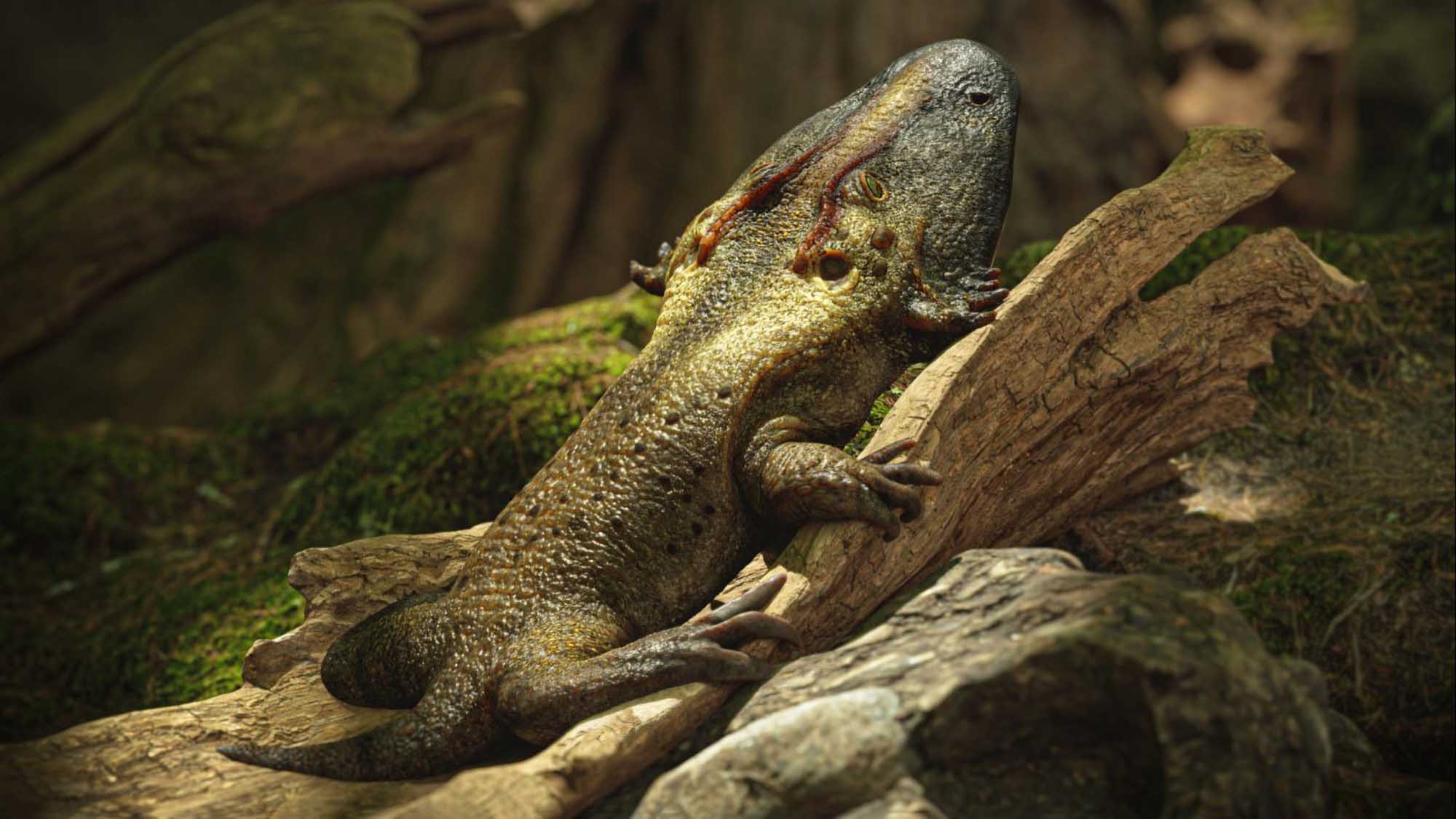Scientists have discovered a previously unknown species of extinct amphibian that used its powerful sticky tongue to catch bugs.
The species – named Chemnitzion richteri – used an ambush strategy to feed, according to researchers in Germany.
With its huge head and small body the creature developed up to 300 million years ago in forests around eastern Germany.
The new species was unearthed by scientists studying remains found in a petrified forest near Chemnitz.
A spokesman for the city said: “The Chemnitzion richteri was an insectivore.
“It was capable of powerfully projecting its large sticky tongue from its mouth to capture insects and articulate animals.”
The amphibian belongs to the group called Labyrinthodontia, ancient Greek for ‘maze-toothed’.

Experts say the amphibians thrived in the late Paleozoic and early Mesozoic eras, about 400 to 120 million years ago.
The specific type discovered by researchers at the Chemnitz petrified forest inhabited the area 291 million years ago.
The German species had short legs and a large head, according to experts from the Chemnitz Natural History Museum and the University of Technology Freiberg.
The scientists stress that the species’ general build is significantly different from any previously known insectivore amphibians.
The find will now go on display at the local Natural History Museum.
Scientists from Chemnitz, nearby Freiberg, the Thuringian town of Schleusingen and Berlin participated in excavations and research.
The petrified forest of Chemnitz is one of the most important archeological sites of the region.
With 300,000 objects on display, the Museum of Natural History Chemnitz is among the biggest and most renowned institutions of its kind in eastern Germany.
Due to its unique features, Chemnitz officials decided to give the recently discovered species a new name.
While scientists and city officials wanted to underline its origin with the first part of its name, ‘richteri’ refers to a renowned local researcher.
Chemnitz is the third-largest city in the German state of Saxony. It has around 245,000 inhabitants.
Chemnitz and Nova Gorica, Slovenia, will be the European Capitals of Culture in 2025.
To find out more about the author, editor or agency that supplied this story – please click below.
Story By: Thomas Hochwarter, Sub-Editor: Joe Golder, Agency: Newsflash
The Ananova page is created by and dedicated to professional, independent freelance journalists. It is a place for us to showcase our work. When our news is sold to our media partners, we will include the link here.




